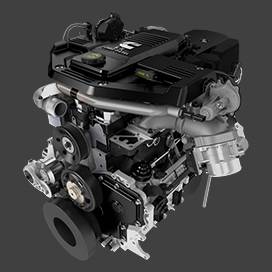আগস্ট . 05, 2024 15:09 Back to list
Techniques for Restoring Brake Drums to Enhance Performance and Extend Vehicle Lifespan
Resurfacing Brake Drums Ensuring Safety and Performance
Brake drums are a critical component of a vehicle’s braking system, particularly in older vehicles and many trucks and SUVs. As friction generates heat during braking, brake drums can wear down over time, leading to reduced braking efficiency and safety concerns. Resurfacing brake drums is an essential maintenance procedure that helps restore their functionality and prolongs their lifespan.
Understanding Brake Drums and Wear Patterns
Brake drums function by housing the brake shoes, which press against the inner surface of the drum to create friction and slow down the vehicle. Continuous use causes wear and tear, which can lead to uneven surfaces, grooves, and hot spots. These imperfections can reduce the contact area between the brake shoes and the drum, leading to poor braking performance, increased stopping distances, and audible signs like squeaking or grinding.
Regular inspection of brake drums is essential, especially if drivers notice any irregularities during braking. A qualified mechanic will measure the thickness of the drums and check for any signs of damage or excessive wear. If the drum exceeds the manufacturer’s specifications, it may need replacement. However, if there is still sufficient material left, resurfacing can be a cost-effective solution.
The Resurfacing Process
Resurfacing brake drums involves machining the inner surface to restore it to a smooth and even profile. This process is typically performed with the use of a lathe that removes a thin layer of material from the drum’s surface. The goal is to eliminate imperfections, ensuring that brake shoes have a uniform surface to contact, which enhances braking efficiency.
resurface brake drums

The resurfacing process begins with the removal of the brake drum from the vehicle. The mechanic will then clean the drum to remove any debris or brake dust, ensuring that the machining process is accurate. With the drum secured on a lathe, the technician carefully turns the drum while a cutting tool surfaces it evenly. This operation not only removes grooving but also ensures that the drum maintains its structural integrity.
After resurfacing, the drum is re-measured to ensure it is within the acceptable limits. It's also essential to check for any significant cracks or damage that may not be remedied by resurfacing. If the drum is found to be overly worn or compromised, replacement is the only safe option.
Benefits of Resurfacing Brake Drums
One of the most significant benefits of resurfacing brake drums is the restoration of braking performance. By providing a smooth surface for the brake shoes, resurfacing can significantly improve stopping power, control, and safety. Furthermore, this process is more economical than a full drum replacement, allowing drivers to save money while extending the life of their existing components.
Regular maintenance, including resurfacing, can also promote better interaction between the brake shoes and drums, reducing the likelihood of squealing and reducing wear on both components. In the long run, properly maintained brakes contribute to safer driving experiences and can help prevent costly repairs down the line.
Conclusion
Resurfacing brake drums is an essential aspect of vehicle maintenance that should not be overlooked. This procedure can significantly enhance the efficiency and safety of a vehicle's braking system, providing drivers with peace of mind on the road. Regular inspections and timely resurfacing can lead to a more reliable braking system, ensuring that drivers can stop safely and effectively when it matters most. As always, it's advisable to consult a professional mechanic to determine the best course of action for brake maintenance.
-
Brake Drum Man - High-Quality Drum Brake Drums & Brake Shoes for Reliable Performance
NewsJun.24,2025
-
High-Quality Brake Drum Kamaz – Durable Drum Brake Drum & Brake Shoe Replacement
NewsJun.10,2025
-
High-Quality Brake Drum Liza for Drum Brake Systems - Superior Durability and Performance
NewsJun.10,2025
-
High-Quality Brake Drum Kamaz – Durable Drum Brake Drum & Brake Shoe Solutions
NewsJun.10,2025
-
Durable Kamaz Brake Drums High-Performance Truck Parts
NewsJun.09,2025
-
Premium Brake Drum Maz Kit with Shoes Enhanced Braking
NewsJun.09,2025
